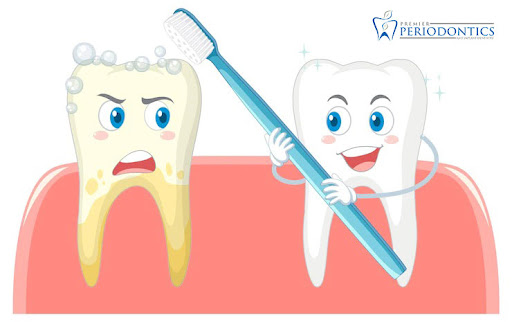Brushing your teeth should be your first concern when it comes to maintaining a healthy mouth. Brushing twice daily with fluoride toothpaste is the foundation of a healthy smile, but there is one simple addition that may dramatically transform how healthy your mouth is — interdental cleaning.
While brushing is the most efficient approach to keeping your teeth clean, it only reaches 60% of the surface of the teeth. Using interdental brushes to clean between your teeth is one of the simplest and most significant things you can do to improve the health of your smile.
What is the significance of interdental cleaning?

Dental plaque can accumulate between teeth where a toothbrush cannot reach.
This can lead to tooth decay, gum irritation, and poor breath over time. It is a good idea to use an interdental brush as part of your daily cleaning practice to avoid this.
An interdental brush is a little brush that is specifically designed to clean between your teeth, where a standard toothbrush cannot. In addition to regular toothbrushing, using an interdental brush on a daily basis is an easy and effective approach to keeping your gums and teeth fresh and healthy.
To keep your mouth fresh and healthy, we recommend cleaning your teeth every day.
When you initially begin cleaning between your teeth, your gums may feel sore and bleed, but do not stop because bleeding gums are frequently an indication of gum inflammation. Contact your dental expert if you do not observe an improvement within a few days.
Choosing the Correct Size
Interdental brushes exist in a variety of sizes, and it can be difficult to choose which one is best for your mouth.
Ask a dental professional for their recommendation for the greatest guidance. Meanwhile, here are a few pointers to get you started…
- Examine your teeth in the mirror and insert the brush between them, near the gums. Begin with the smallest brush size and work your way up until the bristles of the brush make contact with the tooth surface and gum tissue.
- The brush should fit snugly, but the wire, even if plastic-coated, should not come into contact with the sides of the teeth or the gums. Never force the brush into a confined space.
- After inserting the interdental brush, move it back and forth roughly 2-3 times. Make it a habit to clean all of the gaps between your teeth once a day.
- You will most likely want two to three different sizes of brushes, or a combination of one or two brushes and floss — it all depends on the spaces between the teeth, which vary throughout the mouth.
Interdental brushes: How to Use Them
The correct approach is essential for getting the most out of interdental cleaning. The good news is that using interdental brushes is a simple procedure. It is a good habit that will last a lifetime once mastered.
Brush between the front teeth using a straight interdental brush.
Gently place the brush between the teeth. Do not press the brush into a spot; instead, work it in softly or use a lower brush size.
Back and forth with the interdental brush a few times.
When cleaning the back teeth with a little interdental brush
You can slightly curve the soft neck if you use a little interdental brush (TePe’s pink, orange, red, or blue brushes). It is simpler to get between the rear teeth if you apply pressure with your finger.
If you use a larger interdental brush on your rear teeth,
When utilizing larger interdental brushes, slightly curving the wire may increase access between the rear teeth. If you do not straighten or bend the interdental brush at an angle, it will last longer.
We hope you have received all of the necessary information, for additional information, please see our blog section.









